- Home
- Patricia Cornwell
Portrait of a Killer: Jack the Ripper - Case Closed Page 11
Portrait of a Killer: Jack the Ripper - Case Closed Read online
Page 11
A trap is also an opening in stage floors that gives actors quick and easy access to a scene in progress, usually to the surprise and delight of the unsuspecting audience. In most productions of Shakespeare’s Hamlet, the ghost enters and exits through the trap. Sickert probably knew far more about stage traps than sewer traps. In 1881, he played the ghost in Henry Irving’s Hamlet at the Lyceum Theater. The dark shape at the figure’s feet in Sickert’s painting could be a theater trap. It could be a sewer trap. Or it could be a detail Sickert created to tease viewers.
Mary Ann Nichols’s body was lifted off the street and placed inside a wooden shell that was strapped into the ambulance. Two constables accompanied the body to the mortuary, where it was left in the ambulance outside in the yard. By now, it was after 4:30 A.M., and while the constables waited at the mortuary for Inspector John Spratling, a boy who lived in George Yard Buildings helped the police clean up the crime scene. Pails of water were splashed on the ground, and blood flowed into the gutter, leaving only a trace between the stones.
Police Constable John Phail later testified that as he watched the washing of the pavement he noticed a “mass of congealed” blood about six inches in diameter that had been under the body. It was his observation that contrary to what Dr. Llewellyn had said, there was quite a lot of blood, and it appeared to Phail that it had flowed from the murdered woman’s neck under her back and as far down as her waist. Dr. Llewellyn might have noticed the same details had he turned over the body.
Inspector Spratling arrived at the mortuary and impatiently waited in the dark for the keeper to arrive with the keys. By the time Mary Ann Nichols’s body was carried inside, it must have been after 5:00 A.M., and she had been dead for at least two hours. Her body, still inside the shell, was placed on a wooden bench that was typical of those used in mortuaries then. Sometimes these benches or tables were acquired secondhand from butchers at the local slaughterhouses. Inspector Spratling pulled up Mary Ann’s dress for a closer inspection in the gas lamp’s gloom and discovered that her abdomen had been slashed open, exposing the intestines. The next morning, Saturday, September 1st, Dr. Llewellyn performed the autopsy and Wynne Edwin Baxter, the coroner for the South-Eastern Division of Middlesex, opened the inquest into Mary Ann Nichols’s death.
Unlike grand jury proceedings in the United States, which are closed to everyone except those subpoenaed, death inquests in Great Britain are open to the public. In an 1854 treatise on the office and duties of coroners, it was noted that while it may be illegal to publish evidence that could prove important in the trial, these facts were routinely published anyway and benefitted the public. Details might serve as a deterrent, and by knowing the facts—especially when there are no suspects—the public becomes part of the investigative team. Someone might read about the case and realize that he or she has helpful information to add.
Whether this reasoning is valid or not, coroners’ inquisitions and even ex parte proceedings were usually fair game to journalists in 1888, as long as their reporting was truthful and balanced. As appalling as this may seem to anyone unaccustomed to the publication of evidence and testimony before the actual trial, were it not for Britain’s open policy there would be virtually no detailed death investigation records of Jack the Ripper’s crimes. With the exception of a few pages here and there, the autopsy reports have not survived. Many of them were lost during World War II, and others may have disappeared in a clerical, or careless, or dishonest Bermuda Triangle.
It is regrettable that so many documents are missing, because much more could be learned if we had access to the original police reports, photographs, memorandums, and whatever else is gone. But I doubt there was a cover-up. There was no “Rippergate” instigated by police authorities and politicians who were trying to shield the public from a shocking truth. Yet the doubters continue to champion their theories: Scotland Yard has always known who the Ripper was but protected him; Scotland Yard accidentally let him go or tucked him into an asylum and didn’t inform the public; the royal family was involved; Scotland Yard didn’t care about murdered prostitutes and wanted to hide how little the police did to solve the homicides.
Untrue. No matter how badly the Metropolitan Police may have botched the Ripper investigation, there was no deliberate mendacity or disinformation that I could find. The boring fact is that most of what went wrong was due to sheer ignorance. Jack the Ripper was a modern killer born a hundred years too soon to be caught, and over the decades, records, including the original autopsy report of Mary Ann Nichols, have been lost, misplaced, or spirited away. Some ended up in the hands of collectors. I myself bought an alleged original Ripper letter for $1,500.
I suspect the document is authentic and possibly even written by Sickert. If a Ripper letter was available in 2001 through a search by a rare-documents dealer, then that letter at some point must have disappeared from the case files. How many others disappeared? I was told by officials at Scotland Yard that the overriding reason they finally turned over all Ripper files to the Public Record Office in Kew is that so much had vanished. Police officials feared that eventually there would be nothing left except reference numbers linked to empty folders.
The fact that the Home Office sealed the Ripper case records for a hundred years only increased the suspicion of conspiracy enthusiasts. Maggie Bird, the archivist in Scotland Yard’s Records Management Branch, offers a historical perspective on the subject. She explains that in the late nineteenth century it was routine to destroy all police personnel files once the officer turned sixty-one, which accounts for the absence of significant information about the police involved in the Ripper cases. Personnel files on Inspector Frederick Abberline, who headed the investigation, and his supervisor, Chief Inspector Donald Swanson, are gone.
As a matter of routine, Ms. Bird says, even now high-profile murder cases are sealed for twenty-five, fifty, or seventy-five years, depending on the nature of the crime and whether a privacy issue remains for family of the victim or victims. If the Ripper case records had not been sealed for a century, there might not be anything left of them at all. It took two short years after the records were unsealed for “half of them” to vanish or be stolen, according to Ms. Bird.
At present, all Scotland Yard files are stored in a huge warehouse, the boxes labeled, numbered, and logged into a computer system. Ms. Bird claims “with hand on heart” that no Ripper files are lurking about or lost in those boxes. As far as she knows, all have been turned over to the Public Record Office, and she attributes any gaps in the records to “bad handling, human nature or pinching, and the bombings of World War II,” when headquarters—where the records were then stored—were partially destroyed during a blitzkrieg.
While it may have been appropriate to prevent the publication of the graphic details and morgue photographs of nude, mutilated bodies for a period of time, I suspect discretion and sensitivity were not the only motives behind locking up files and hiding the key. No good could come from reminding the world that the Yard never caught its man, and there was no point in dwelling on an ugly chapter in English history when the Metropolitan Police Department was disgraced by one of its worst commissioners.
Her Majesty the Queen must have been suffering a spell of some sort when she decided to drag a tyrannical general out of Africa and put him in charge of the civilian police in a city that already hated “blue bottles” and “coppers.”
Charles Warren was a brusque, arrogant man who wore elaborate uniforms. When the Ripper crimes began in 1888, Warren had been commissioner for two years, and his answer to everything was political subterfuge and force, as he had proven the year before on Bloody Sunday, November 13th, when he forbade a peaceful socialist demonstration in Trafalgar Square. Warren’s order was illegal, and it was ignored by socialist reformers such as Annie Besant and Member of Parliament Charles Bradlaugh, and the peaceful demonstration was to go on as planned.
Following Warren’s orders, the police attacked the unsuspecting and
unarmed protesters. Mounted police charged in, “rolling men and women over like ninepins,” wrote Annie Besant. Soldiers arrived, ready to fire and swinging truncheons, and peace-loving, law-abiding working men and women were left with shattered limbs. Two were dead, many were wounded, people were imprisoned without representation, and the Law and Liberty League was formed to defend all victims of police brutality.
To add to Warren’s abuse of power, when the funeral for one of those slain was scheduled, he forbade the hearse to travel along any of the main roads west of Waterloo Bridge. The massive procession moved slowly along Aldgate, through Whitechapel, and ended at a cemetery on Bow Road, passing through the very section of the Great Metropolis where a year later the Ripper began murdering the Unfortunates whom Annie Besant, Charles Bradlaugh, and others were trying to help. Sickert’s brother-in-law, T. Fisher Unwin, published Annie Besant’s autobiography, and Sickert painted Charles Bradlaugh’s portrait twice. Neither was a coincidence. Sickert knew these people because Ellen and her family were active Liberals and moved in those political circles. In the early days of Sickert’s career, Ellen helped him professionally by introducing him to well-known figures whose portraits he might paint.
Annie Besant and Charles Bradlaugh gave their lives to the poor. Walter Sickert took the lives of the poor, and it was disgraceful that some newspapers began to suggest that the Ripper’s crimes were a socialist statement directed at graphically exposing the underside of the class system and the dirty secrets of the greatest city in the world. Sickert murdered sick and miserable prostitutes who were old long before their time. He murdered them because it was easy.
He was motivated by his lust for sexual violence, his hatred, and his insatiable need for attention. His murders had nothing to do with making socialist political statements. He killed to satisfy his uncontrollable violent psychopathic needs. No doubt when the papers and public hinted at motive—especially a social or ethical one—Sickert enjoyed a secret delight and rush of power. “[H]a! ha! ha!” the Ripper wrote. “To tell you the truth you ought to be obliged to me for killing such a deuced lot of vermin, why they are ten times worse than men.”
CHAPTER NINE
THE DARK LANTERN
During the reign of George III, robbers ruled the high roads and byways, and most villains could buy their way out of trouble with a bribe.
London was protected by night watchmen armed with staves, lanterns, and wooden noisemakers called rattles that made a startling clack-clack-clack sound when the head was spun. It wasn’t until 1750 that times began to change. Henry Fielding, better known as an author than a magistrate, gathered a faithful group of constables under his command. With £400 allotted by the government, Fielding formed the first squadron of “thief-takers.”
They broke up gangs and other scoundrels who terrorized the lives of Londoners. When Henry Fielding was ready to move on, he was followed by his brother John, in whose case justice was truly blind. Sir John Fielding had lost his eyesight and was famous for wearing a bandage over his eyes when he confronted prisoners. He was said to recognize criminals by voice.
Under Sir John Fielding’s supervision, the thief-takers were headquartered on Bow Street and became known as the Bow Street Patrol and then the Bow Street Runners. At this stage, policing was somewhat privatized, and a Bow Street Runner might investigate the burglary of a resident’s town house for a fee or simply find the perpetrator and coax him to agree on a settlement with the victim. In an odd way, criminal and civil law were combined, because while it was unlawful to commit bad deeds, order could be restored and a lot of fuss and bother could be avoided through dealmaking.
Better to have half of one’s belongings returned than none at all. Better to give back half of what one had stolen than to lose it all and end up in prison. Some Bow Street Runners retired as wealthy men. Nothing much could be done about riots and murders, which were rampant, as were other evil deeds. Dogs were stolen and killed for their hides. Cattle were tortured by “bullock-baiting,” and sporting mobs chased the pain-crazed animals until they collapsed and died. From the late 1700s until 1868, executions were public and drew tremendous crowds.
Hanging days were holidays, and the gruesome spectacle was considered a deterrent to crime. During the days of thief-takers and Bow Street Runners, violations of the law punishable by death included horse stealing, forging, and shoplifting. In 1788, thousands gathered at Newgate to watch thirty-year-old Phoebe Harris burned at the stake for counterfeiting coins. Highwaymen were heroes, and admirers cheered them on as they dangled, but the convicted upper class were ridiculed no matter their crime.
When Governor Joseph Wall was hanged in 1802, onlookers fought over the executioner’s rope, buying it for a shilling per inch. In 1807, a crowd of 40,000 gathered to watch the execution of two convicted murderers, and men, women, and children were trampled to death. Not every prisoner died quickly or according to plan, and some of the agonal scenes were ghastly. The knot slipped or didn’t catch just right and instead of compression of the carotid causing unconsciousness fast, the strangling prisoner flailed violently as men grabbed his kicking legs and pulled down hard to hasten death along. Usually the condemned man lost his pants and twisted and writhed naked in front of the screaming mob. In the old days of the axe, a refusal to place a few coins into an executioner’s hand could result in bad aim that required a few extra chops.
In 1829, Sir Robert Peel convinced government and the public that they had a right to sleep safely within their own homes and walk the streets without worry. The Metropolitan Police were established and headquartered at 4 Whitehall Place, its back door opening onto Scotland Yard, the former site of a Saxon palace that had served as a residence for visiting Scottish kings. By the late seventeenth century, most of the palace had fallen to ruin and was demolished, and what remained was used as offices for British government. Many well-known figures once served the crown from Scotland Yard, including the architects Inigo Jones and Christopher Wren and the great poet John Milton, who at one time was the Latin secretary to Oliver Cromwell. Architect and comic writer Sir John Vanbrugh built a house on the old palace grounds that Jonathan Swift compared to a “goose pie.”
Few people realize that Scotland Yard has always been a place and not a police organization. Since 1829, “Scotland Yard” has referred to the headquarters of the Metropolitan Police, and that remains true today, although the official name now is “New Scotland Yard.” I suspect the public will continue to hold to the belief that Scotland Yard is a group of sleuths like Sherlock Holmes and that a London uniform officer is a bobby. Perhaps there will always be books and movies with provincial police who are stumped by a murder and deliver that delightfully hackneyed line, “I think this is a job for Scotland Yard.”
From its earliest days, Scotland Yard and its uniformed divisions were resented by the public. Policing was viewed as an affront to the Englishman’s civil rights and associated with martial law and the government’s way of spying and bullying. When the Metropolitan Police were first organized, they did their best to avoid a military appearance by dressing themselves in blue coats and trousers and topped themselves off with rabbit-skin stovepipe hats reinforced with steel frames just in case an apprehended criminal decided to knock an officer on the head. The hats also came in handy as footstools for climbing over fences and walls or getting into windows.
At first, the Metropolitan Police had no detectives. It was bad enough having bobbies in blue, but the idea of men in ordinary garb sneaking about to collar people was violently opposed by citizens and even by the uniformed police, who resented the fact that detectives would get better pay and worried that the real purpose of these plainclothesmen was to tattle on the rank and file. Developing a solid detective division by 1842 and introducing plainclothes officers in the mid-1840s entailed a few fumbles, including the unenlightened decision to hire educated gentlemen who had no police training. One can only imagine such a person interviewing a drunk East End husband wh
o has just smashed his wife in the head with a hammer or taken a straight razor to her throat.
The Criminal Investigation Department was not formally organized until 1878, a mere ten years before Jack the Ripper began terrorizing London. By 1888, public sentiment about detectives had not changed much. There remained misgivings about police wearing plainclothes or arresting people by artifice. The police were not supposed to trap citizens, and Scotland Yard strictly enforced the rule that plainclothes policing could take place only when there was ample evidence that crimes in a certain area were being committed repeatedly. This approach was enforcement, not prevention. It delayed Scotland Yard’s decision to order undercover measures when the Ripper began his slaughters in the East End.
Scotland Yard was completely unprepared for a serial killer like the Ripper, and after Mary Ann Nichols’s murder, the public began to cast its eye on the police more than ever, and to criticize, belittle, and blame. Mary Ann’s murder and inquest hearings were obsessively covered by every major English newspaper. Her case made the covers of tabloids such as The Illustrated Police News and the budget editions of Famous Crimes, which one could pick up for a penny. Artists rendered sensational, salacious depictions of the homicides, and no one—neither the officials of the Home Office nor the policemen nor the detectives and brass at Scotland Yard nor even Queen Victoria—had the slightest comprehension of either the problem or its solution.
When the Ripper began making his rounds there were only uniformed men walking their beats, all of them overworked and underpaid. They were issued the standard equipment of a whistle, a truncheon, perhaps a rattle, and a bull’s-eye lantern, nicknamed a dark lantern because all it really did was vaguely illuminate the person holding it. A bull’s-eye lantern was a dangerous, cumbersome device comprised of a steel cylinder ten inches high, including a chimney shaped like a ruffled dust cap. The magnifying lens was three inches in diameter and made of thick, rounded, ground glass, and inside the lamp were a small oil pan and wick.

 Blow Fly
Blow Fly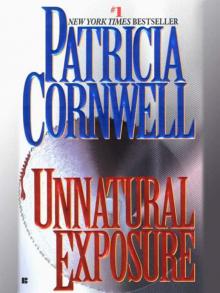 Unnatural Exposure
Unnatural Exposure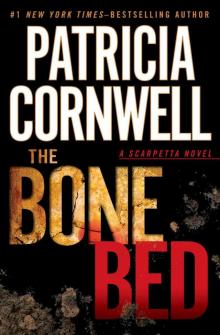 The Bone Bed
The Bone Bed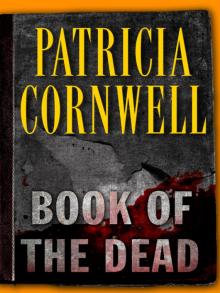 Book of the Dead
Book of the Dead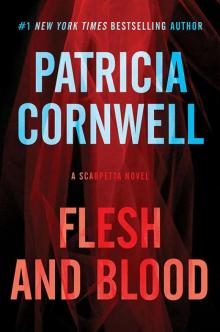 Flesh and Blood: A Scarpetta Novel (Scarpetta Novels Book 22)
Flesh and Blood: A Scarpetta Novel (Scarpetta Novels Book 22)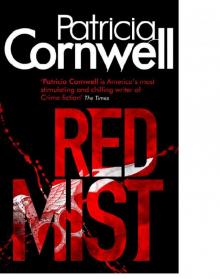 Red Mist
Red Mist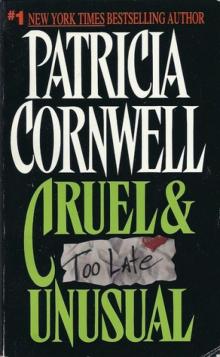 Cruel & Unusual
Cruel & Unusual Hornet's Nest
Hornet's Nest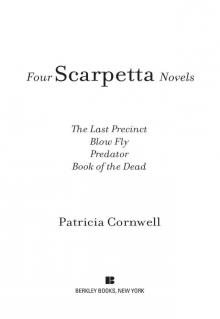 Four Scarpetta Novels
Four Scarpetta Novels Scarpetta's Winter Table
Scarpetta's Winter Table Isle of Dogs
Isle of Dogs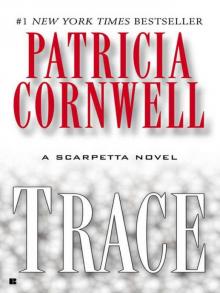 Trace
Trace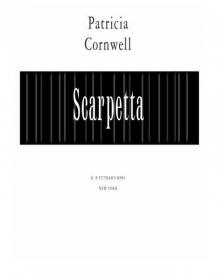 Postmortem
Postmortem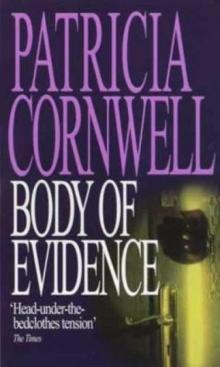 Body of Evidence ks-2
Body of Evidence ks-2 Southern Cross
Southern Cross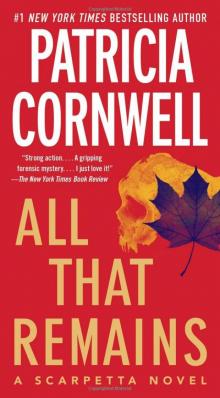 All That Remains
All That Remains Point of Origin
Point of Origin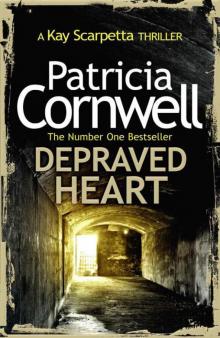 Depraved Heart
Depraved Heart Ruth, a Portrait: The Story of Ruth Bell Graham
Ruth, a Portrait: The Story of Ruth Bell Graham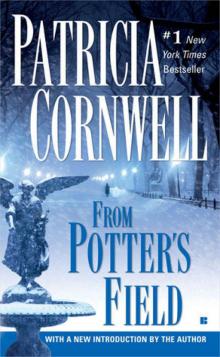 From Potter's Field
From Potter's Field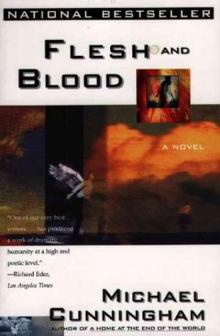 Flesh and Blood
Flesh and Blood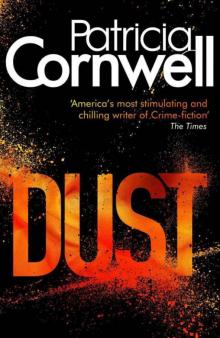 Dust
Dust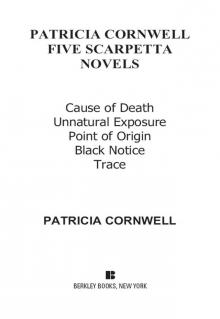 The Body Farm
The Body Farm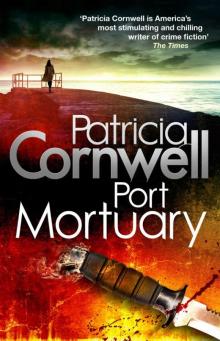 Port Mortuary
Port Mortuary Quantum
Quantum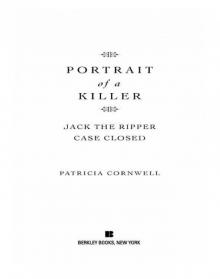 Portrait of a Killer: Jack the Ripper - Case Closed
Portrait of a Killer: Jack the Ripper - Case Closed Spin (Captain Chase)
Spin (Captain Chase)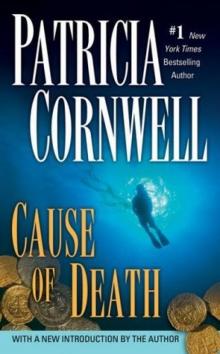 Cause of Death
Cause of Death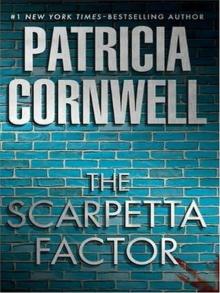 The Scarpetta Factor
The Scarpetta Factor Predator
Predator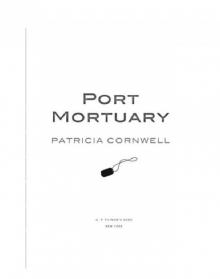 Scarpetta 18 - Port Mortuary
Scarpetta 18 - Port Mortuary Trace ks-13
Trace ks-13 Portrait of a Killer
Portrait of a Killer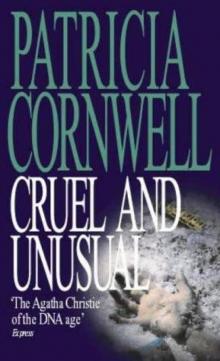 Cruel and Unusual ks-4
Cruel and Unusual ks-4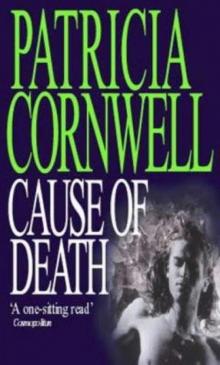 Cause Of Death ks-7
Cause Of Death ks-7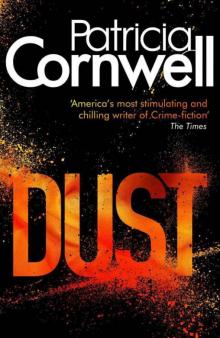 Dust ks-21
Dust ks-21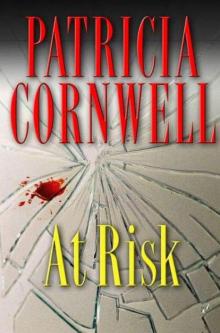 At Risk wg-1
At Risk wg-1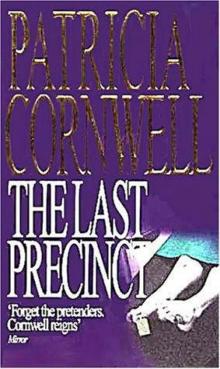 The Last Precinct ks-11
The Last Precinct ks-11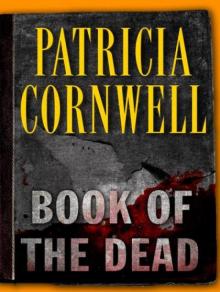 Book of the Dead ks-15
Book of the Dead ks-15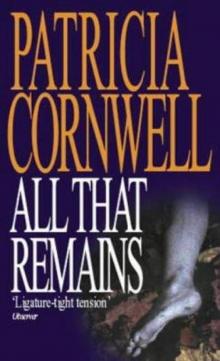 All That Remains ks-3
All That Remains ks-3 Ruth, a Portrait
Ruth, a Portrait Scarpetta's Winter Table (kay scarpetta)
Scarpetta's Winter Table (kay scarpetta)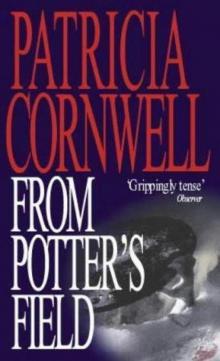 From Potter's Field ks-6
From Potter's Field ks-6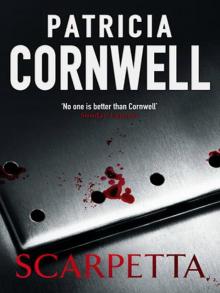 Scarpetta
Scarpetta Isle of Dogs jhabavw-3
Isle of Dogs jhabavw-3 Hornet's Nest jhabavw-1
Hornet's Nest jhabavw-1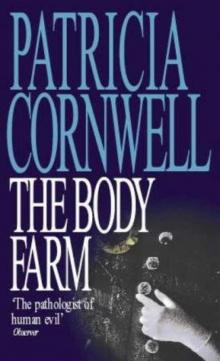 The Body Farm ks-5
The Body Farm ks-5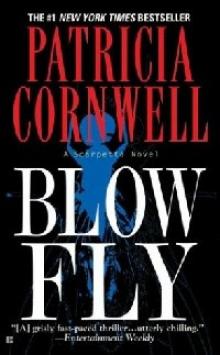 Blow Fly ks-12
Blow Fly ks-12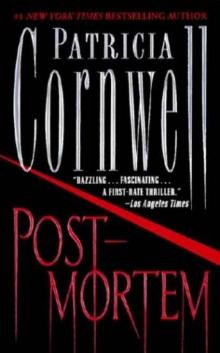 Post Mortem
Post Mortem Five Scarpetta Novels
Five Scarpetta Novels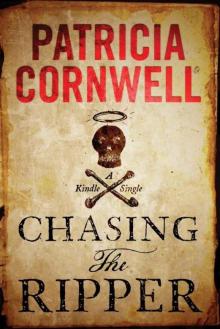 Chasing the Ripper (Kindle Single)
Chasing the Ripper (Kindle Single)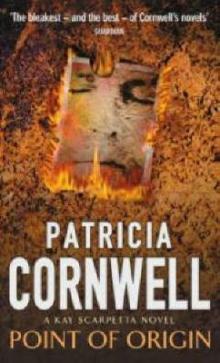 Point of Origin ks-9
Point of Origin ks-9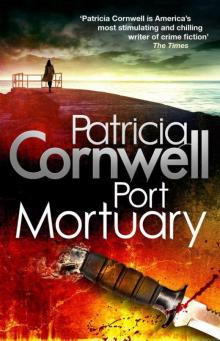 Port Mortuary (2010)
Port Mortuary (2010)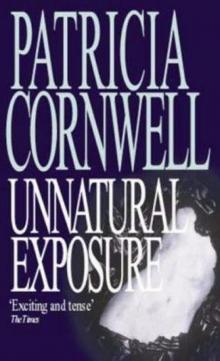 Unnatural Exposure ks-8
Unnatural Exposure ks-8 Southern Cross uhabavw-2
Southern Cross uhabavw-2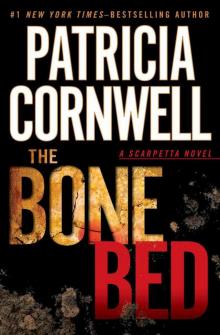 The Bone Bed ks-20
The Bone Bed ks-20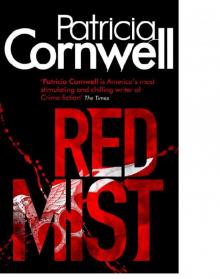 Red Mist ks-19
Red Mist ks-19 Port Mortuary (2010) ks-18
Port Mortuary (2010) ks-18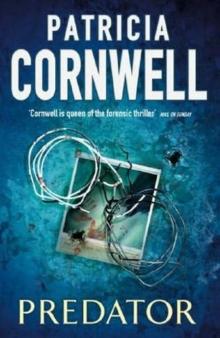 Predator ks-14
Predator ks-14